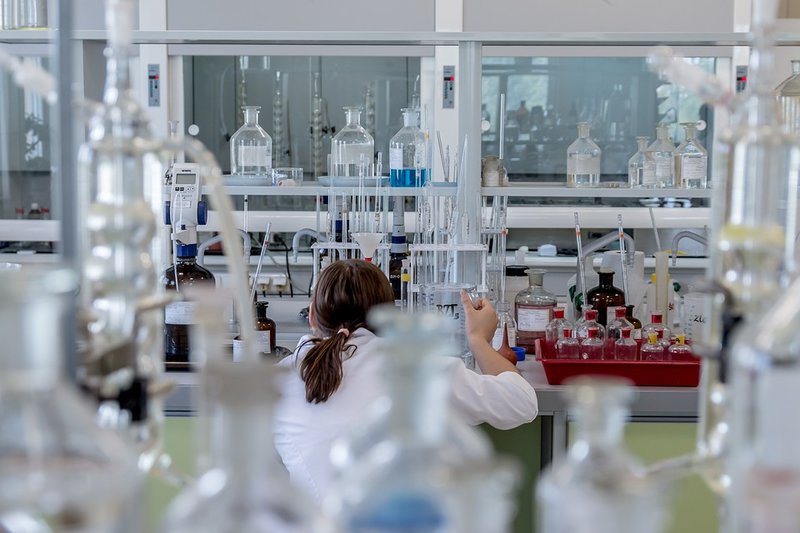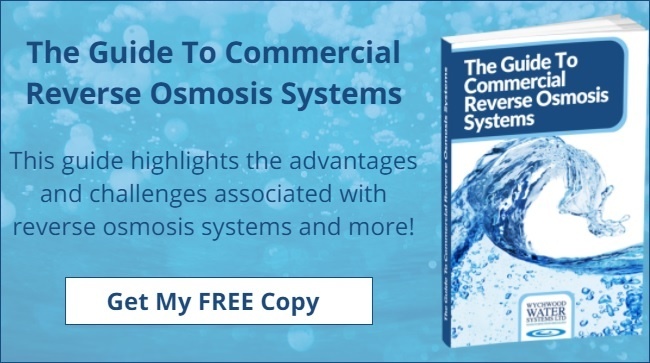
One advantage of being a small company with experienced technical sales & service personnel is that each enquiry can be considered on its own merits in detail. On this basis after being called in to conduct a review, Wychwood Water carried out a free site survey together with a report on the existing laboratory water purification ringmain system. The existing water purification system had been installed by a competitor and the client was concerned about its longevity.
On review it was deemed flawed in its design in several areas. What lessons can be learnt on the subject of water purification system design?
RO Unit Configuration & Pre-Treatment
Watch out for basic RO units. In this case the existing RO system did not have a means of flushing to drain on start-up. This meant that water standing in the membrane housings in between permeate production (storage tank full condition) would pass through to the downstream process instead of being purged from the system and sent to drain.
Wychwood also found the softener configured so that it was free to enter regeneration without any signal to the RO unit to stop it running, meaning a scenario could arise whereby the RO unit pump would be starved of water and trip into fault as a result.
Storage Tank
Always choose a sanitary tank. The tank was of a rectangular design with a flat base and was too large for the demand, meaning it stored static water for lengthy periods of time. The standing water had led to the growth of algal scum around the tank by allowing bacteria to adhere to the tank surfaces, in this case more prevalent due to the rectangular shape of the tank.
To remedy this, Wychwood carried out a thorough survey of the actual site water usage with the site laboratory management to determine the amount of water used per day, both peak usage and average. A smaller tank, cylindrical in shape with a sloping base & air vent filtration was proposed, being sanitary in design with a spray ball fitted to wet around the full extent of the tank surfaces.
Re-circulation Pump, UV & Filtration
Size ringmain components based on good design. Having measured the length of the existing ABS pipework, Wychwood proposed a suitably sized larger replacement pump to deliver water at an optimum velocity of 1 m/s, thereby creating a turbulent flow minimising the risk of bacterial growth and biofilm formation on the pipework. The existing UV was too small to cope with the necessary ringmain flowrate & velocity, and likewise the sub-micron ringmain filtration, which was also upgraded from a plastic bowl type to a sanitary stainless-steel housing type.
Chiller
Avoid build-up of heat in the system. A heat exchanger-based chiller was recommended to come on-line at a pre-determined temperature to ensure the system didn’t get too warm, thereby avoiding the temperatures associated with the growth of bacteria in water systems.
Sample Points
Select proper sample points. The existing system did not have suitable sample points on the ringmain pipework, meaning any samples taken were inconsistent at best. To avoid spurious water sample results, Wychwood recommended the system include stainless steel bio-sample points on the flow and return. These sample points ensure that each sample is repeatable in its methodology and taken in-line from the distribution flow of the purified water itself.
Ringman Design
Having surveyed the distribution pipework in more detail with the end-user, it was agreed to remove any dead-legs and form a fully recirculating loop incorporating some new points. Some new lab taps with a fully recirculating design were specified at new locations. And flowmeters were installed to allow users to see the system flowrate (the existing system did not have these).
Monitoring
It is certainly not prudent to skimp on monitoring, this being the component measuring the quality of the purified water being produced and therefore providing feedback on how the system is performing. Without a high quality monitor, it is impossible to make reliable judgements on whether the system is performing well because the output information is not repeatable and therefore cannot be trusted. In this case the monitoring was specified with temperature compensation.
Conclusion
It is important to carefully vet any potential supplier in water treatment to establish whether they have a track record of supplying water purification equipment, also whether they have a sufficient number of specialists to do the project justice. Have they several years of experience? What sort of installations have they done before? Are they a service company dabbling in equipment sales? Will you get a bespoke solution or merely a one size fits all system? Also many water treatment chemical companies chance their arm in the equipment market, treating each application with insufficient attention to detail.
Wychwood Water Systems has many years of experience of specialising in designing and manufacturing RO systems and Demin plant to their client’s exacting requirements. Wychwood offers service support and maintenance packages on both its own equipment and competitor equipment as required throughout the UK and overseas. Further information can be found at www.wychwood-water.com.









 We are a specialist independent company involved in water purification and water treatment technologies
We are a specialist independent company involved in water purification and water treatment technologies


